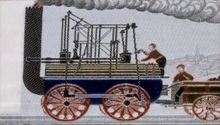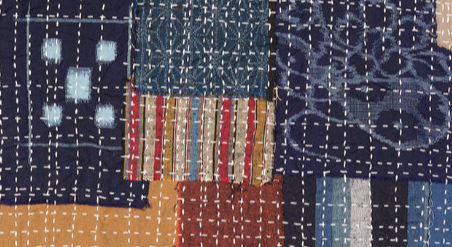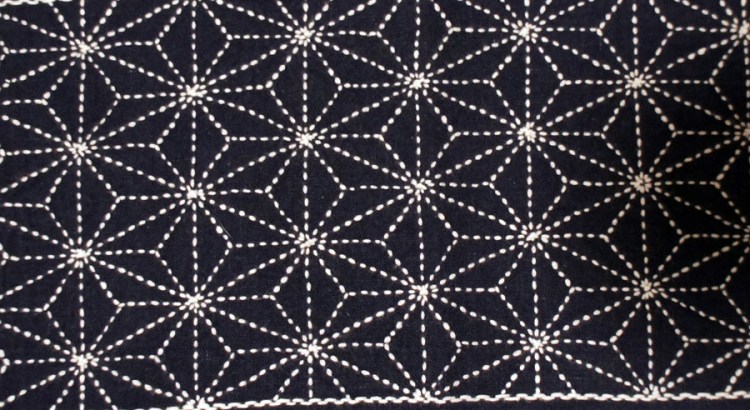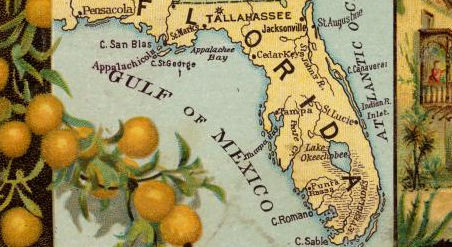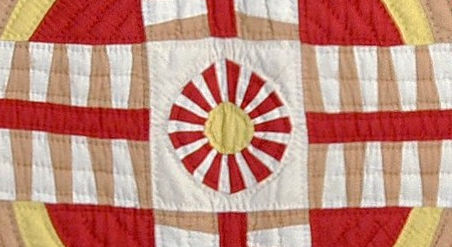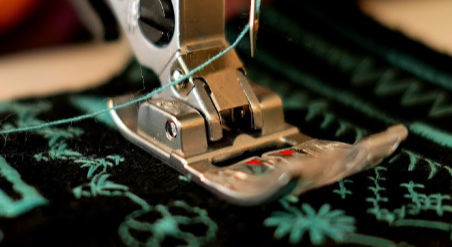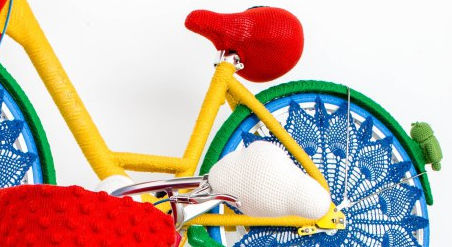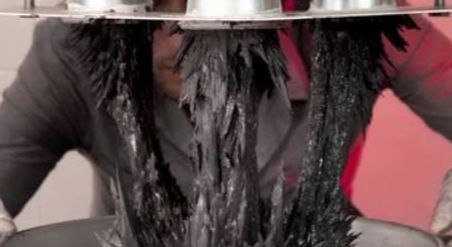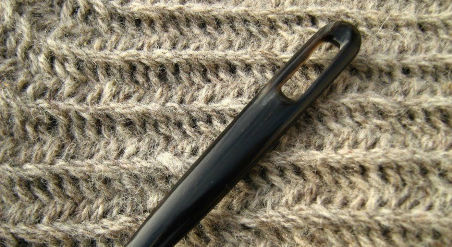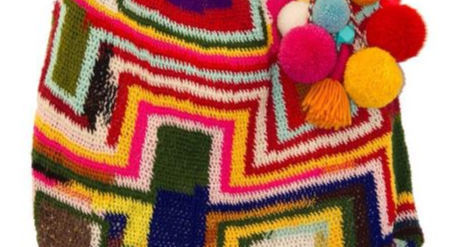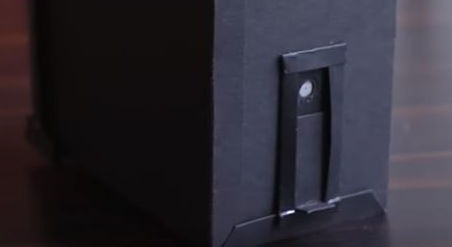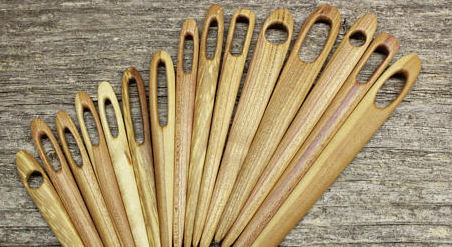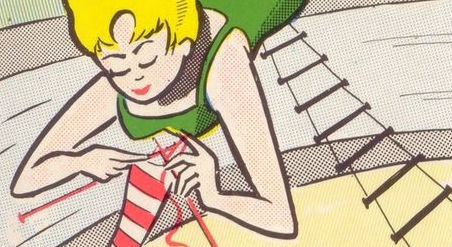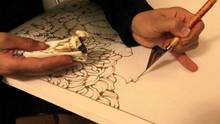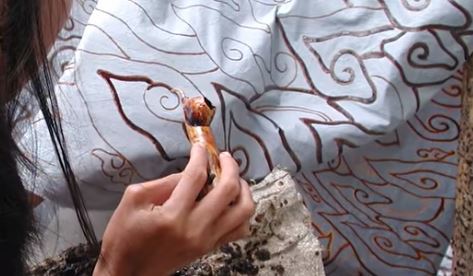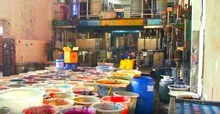Below are four videos about the making of batik, a wax-resistant fabric-making process.
In order to get a multi-colored end result, the fabric will go through a series of dye baths, with wax drawing or stamping done in between the different colored baths.
Batik fabricators need to plan out the colors they're going to use, and begin with the lightest color. Each color is preserved from the next dye bath by drawing melted, liquid wax on the parts of the fabric that are to remain the current color.
The cooled wax seals the wax-covered parts of the cotton, preventing those areas from absorbing dye. The cotton will absorb the dye in the areas that are not covered in wax.
After all the dyeing, the wax will be melted off the fabric.
The videos below show different techniques and styles of batik-making, from carefully planned patterns made with a thin-line drawing tool to abstract, improvised strokes made with wide brushes.
Batik of Java: A Centuries Old Tradition by the San Francisco Asian Art Museum
· Don't miss: To read a transcript of this video, scroll down to the bottom of this page.
Batik Documentary Transcript
"Many places in the world pattern textiles by applying wax to protect certain areas from dye. During the dye process, the waxed areas resist the dye, and when the wax is removed, a pattern emerges. Both the technique and the textiles produced are called batik. The word “batik” may derive from the Javanese words “to write” and “dots.”
Nowhere in the world is this method of patterning textiles as highly refined as in Indonesia. There are two main methods of making Indonesian batik: one using a small tool called a canting to draw patterns, the other using metal stamps to apply the wax. Stamps produce textiles faster for both export and domestic demand. In this way, batik can be made at a lower cost, and finished garments are more affordable.
The most refined and expensive batik is produced by hand. Patterns are drawn using a canting or wax stylus, a method called batik tulis or “written batik.” The stylus consists of a bamboo or wood stick with a small spouted copper reservoir for wax at the end. The artist dips the cup into a pot of hot wax, blows on it to assure smooth application through the spout, and then applies the wax, drawing patterns with the spout. After both sides of a cloth have been waxed, it is ready to be dyed. For a complex pattern with many colors, the cloth is waxed and dyed many times.
Let’s look at the process of batik by visiting a collective of artisans in the village of Kebon in Central Java. The first step in making batik is to apply the design. The design is first drawn on paper and then transferred using a pencil, or non-permanent ink, to fine white cotton cloth. The design may be a centuries-old traditional pattern, or, as in the case here, it may reflect the contemporary aesthetics of the artisans. After the pattern is transferred, the cloth is ready for the first layer of wax.
Batik wax is a combination of paraffin, beeswax, and resin. It is a translucent yellow when it is fresh, but may look dark brown or black after many reuses. The artisan retraces the design on the cloth with wax using the canting. Some areas are then filled in with decorative detail, known as isen-isen. A skilled batik artisan will know hundreds of isen-isen.
The artist applies the wax with steadiness; years of practice that often began as a child allows her to work quickly, with fluidity and accuracy. Once the wax has been applied to the entire cloth, it is ready for its first immersion in a dye bath.
Many communities in Indonesia use imported synthetic dyes; however, there is a growing trend to use natural dyes, as we find in this collective of artisans in Kebon. Traditionally, the ability to make dyes was extremely important in textile-producing communities, and villages would be known for the quality of dyes produced. Some frequently used colors are derived from indigo leaves, jelawe fruit, mahogany wood, teger wood, tinggi bark, and mango leaves.
The dye is heated in outdoor pots. Nothing goes to waste in the countryside where wood and ash waste from the fire will feed hungry chickens. The dye is transferred to a basin where the artisan ensures the cloth is immersed. After the first dye bath, the cloth is dried in the sun. Then, certain areas are covered with wax, to preserve the first color, before the cloth is dipped into a second color.
The artisan is familiar with the finished design, and knows where to apply the wax. Fine cantings are used to draw lines to contain the colorful design. Cantings with larger spouts will be used to “hold” large areas of color that will be preserved during subsequent dye baths. This process of applying wax to the cloth, dyeing, adding more wax, and further dyeing and drying will be repeated several, if not dozens of times, depending on the pattern and number of finished colors in the batik cloth.
Between waxings, the textile is sometimes immersed in boiling water to remove wax, and then rewaxed to protect different parts of the pattern from subsequent dyeing. Once the dyeing and waxing is completed, the cloth is ready for final wax removal.
The textiles are taken to a neighboring house where large pots of water are set up for wax removal. The wax will be collected for reuse by boiling it out in several pots from very hot to cooler water. The reclaiming of the wax is part of the sustainable practice in this community, where recycled wax is used again.
Finally, the cloth is wrung out and returned to the village, where it is hung to dry a last time. Finished batik cloths can be used for many purposes. They are worn as sarongs and made into clothing and accessories for both local uses and export. Today, contemporary fashion designers are also incorporating batik into their designs. Batik remains an important element of costume for dance performances and for ceremonial dress in many parts of Indonesia and neighboring countries Children learn how to work in a community of artisans, each generation passing on to the next the cultural heritage of this remarkable cloth."
Creative Commons Attribution/Non-Commercial/Share-Alike
